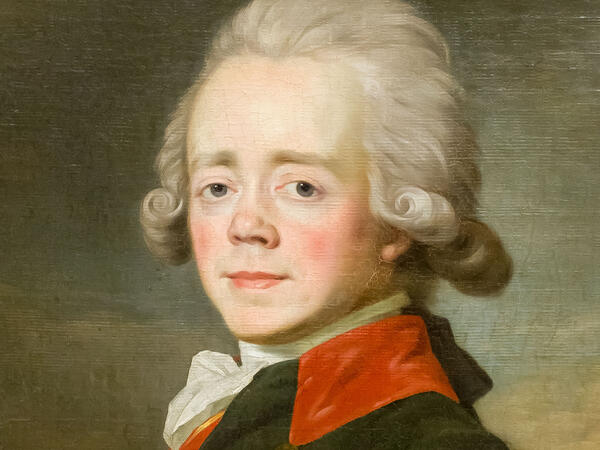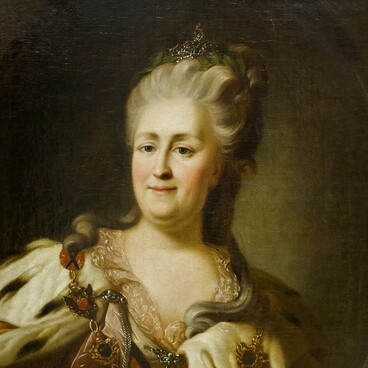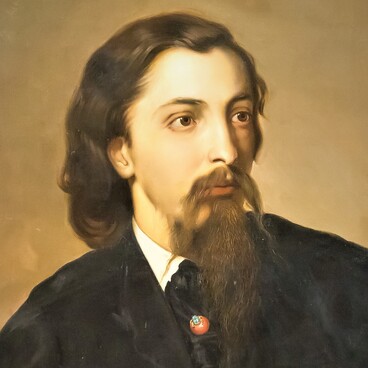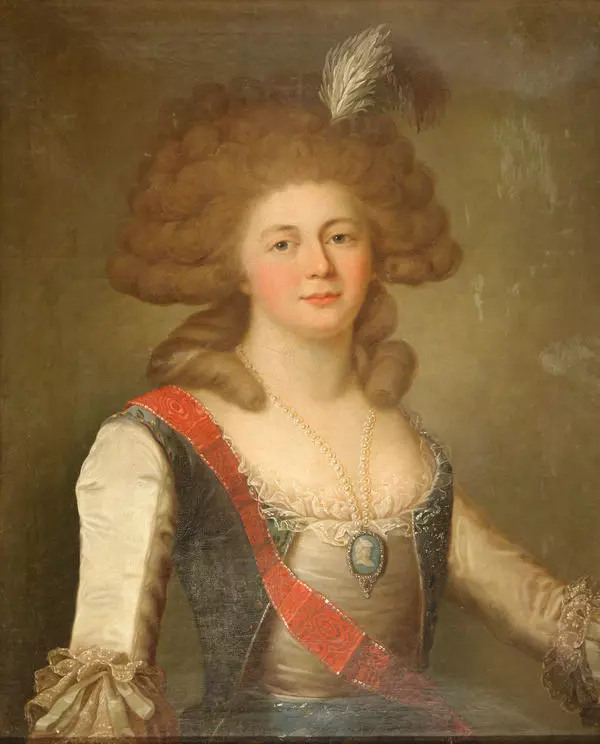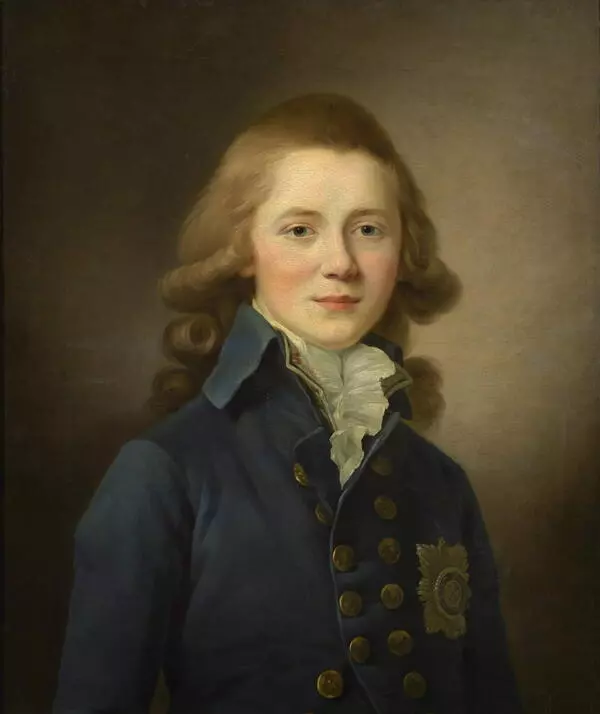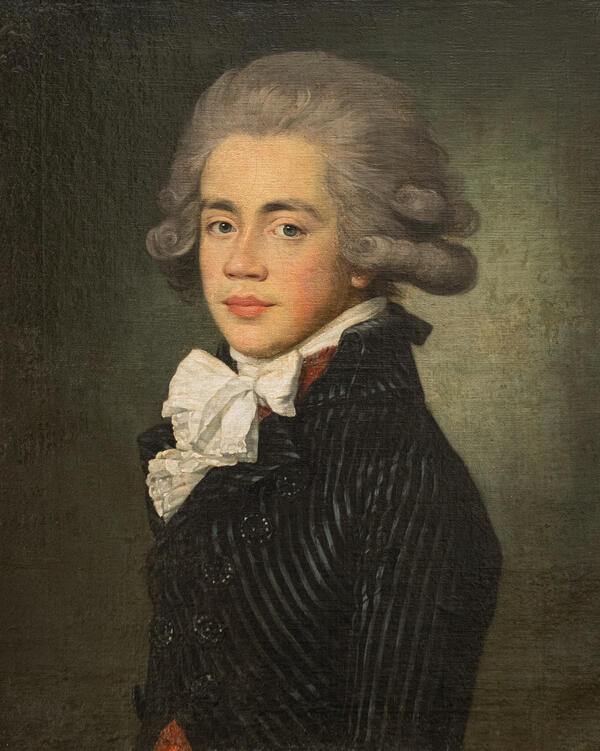The portrait was painted by a French artist Jean-Louis Voille. In the 1760s, he came to Saint Petersburg to work as an actor, but became mostly known as a portraitist. His manner of painting was reserved and refined. The portraits by his hand were distinguished by monochromatic silver shades and intrinsic lyricism. In time Jean-Louis Voille made it into the Gatchina Palace, and in 1780, he was appointed court painter to the future Russian Grand Duke Pavel Petrovich. The latter would become Paul I, Emperor of Russia, and is depicted in this very portrait.
The composition and color scheme emphasize the exquisite modesty of the painting. Voille paid great attention to the light effects: the evenly lit foreground highlights the face, especially the expansive forehead which adds accentuated nobility to the image. At the same time, Pavel Petrovich seems aware of his own significance. Jean-Louis Voille’s achievement lies in the fact that he managed to combine the look of self-importance required of a future emperor with the feeling of soft tranquility.
The Grand Duke is portrayed in the uniform, with the stars of the Order of St Andrew and the first class Order of St Anna on its left side. On his neck, there is the second class Order of St Anna with diamonds. It is worth mentioning that the Order of St Anna was especially cherished by the Grand Duke.
The order would not have existed if it had not been for Pavel Petrovich’s grandmother. It was established in 1735 by his grandfather, Duke Karl Friedrich. Ten years prior, he married the eldest daughter of Peter the Great — Anna. Unfortunately, she passed away soon after giving birth to her son. In memory of his beloved wife, Karl Friedrich founded the Order of St Anna. Originally, it was a Holstein ducal order. But Anna’s son Pyotr Fyodorovich, who was declared the Russian heir apparent by his aunt — Empress Elizabeth — presented the order after arriving in Russia. The Order was established as part of the Imperial Russian system of honors by Paul I on the day of his coronation.
Jean-Louis Voille stayed in the Russian Empire for the rest of his life. Once he had to leave because of the events caused by the French revolution, when all French painters had to either sign the decree of Catherine II to renounce their homeland or leave the country. Voille chose to come home, but after the death of the Empress he returned due to lack of money.
The composition and color scheme emphasize the exquisite modesty of the painting. Voille paid great attention to the light effects: the evenly lit foreground highlights the face, especially the expansive forehead which adds accentuated nobility to the image. At the same time, Pavel Petrovich seems aware of his own significance. Jean-Louis Voille’s achievement lies in the fact that he managed to combine the look of self-importance required of a future emperor with the feeling of soft tranquility.
The Grand Duke is portrayed in the uniform, with the stars of the Order of St Andrew and the first class Order of St Anna on its left side. On his neck, there is the second class Order of St Anna with diamonds. It is worth mentioning that the Order of St Anna was especially cherished by the Grand Duke.
The order would not have existed if it had not been for Pavel Petrovich’s grandmother. It was established in 1735 by his grandfather, Duke Karl Friedrich. Ten years prior, he married the eldest daughter of Peter the Great — Anna. Unfortunately, she passed away soon after giving birth to her son. In memory of his beloved wife, Karl Friedrich founded the Order of St Anna. Originally, it was a Holstein ducal order. But Anna’s son Pyotr Fyodorovich, who was declared the Russian heir apparent by his aunt — Empress Elizabeth — presented the order after arriving in Russia. The Order was established as part of the Imperial Russian system of honors by Paul I on the day of his coronation.
Jean-Louis Voille stayed in the Russian Empire for the rest of his life. Once he had to leave because of the events caused by the French revolution, when all French painters had to either sign the decree of Catherine II to renounce their homeland or leave the country. Voille chose to come home, but after the death of the Empress he returned due to lack of money.

